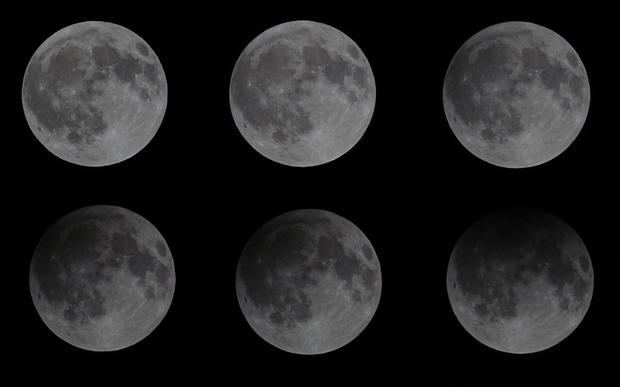
How to see the penumbral lunar eclipse, March’s full Worm Moon
In March, astronomy enthusiasts have the opportunity to observe a special Worm Moon as the full moon coincides with a penumbral lunar eclipse.
The full moon of March will be at its brightest at 1 a.m. ET on Monday and will remain fully visible until Tuesday morning, as reported by NASA. The Old Farmer’s Almanac provides individual moonrise schedules for various ZIP codes in the US.
As the night of March 24 turns to the early morning of March 25, the full moon will pass through the outer portion of the Earth’s shadow known as the penumbra, resulting in a penumbral eclipse.
A penumbral eclipse is one of three distinct kinds of lunar eclipses, alongside the total lunar eclipse and the partial lunar eclipse.
NASA reports that the penumbral lunar eclipse, which will occur in North and South America, will be observable to the general public. Without prior knowledge, it may go unnoticed.
During the eclipse, there will be a slight dimming of the moon for a few hours at night. The moon will begin entering the Earth’s shadow at 12:53 a.m. Eastern Time and will reach the maximum eclipse point at 3:13 a.m., with 96% of the moon in partial shadow. The moon will come out of the shadow at 5:32 a.m.
Liu Debin/VCG via Getty Images
On September 18, there will be a partial lunar eclipse that can be observed in certain areas of the Americas, Europe, and Africa. The next total lunar eclipse will not be visible until March of next year for astronomy enthusiasts.
What is the reason behind referring to March’s full moon as the Worm Moon?
The names for full moons are typically inspired by the seasons, crops in history, and the behavior of specific animals. The term “Worm Moon” could potentially be attributed to the presence of earthworms as spring approaches, as documented by The Old Farmer’s Almanac. It may also be associated with the emergence of worms or beetle larvae from tree bark as the winter weather subsides.
The full moon in March is also referred to by various animal-related names like the Eagle Moon, Goose Moon, and the Crow Comes Back Moon. Some other names it goes by are the Sugar Moon, Wind Strong Moon and Sore Eyes Moon.
In the current year, the full moon in March is also referred to as the Paschal Full Moon as it marks the first full moon of the spring season.
What other celestial objects can be observed in the sky during the spring season?
April 8th will bring one of the most highly anticipated events of the year.total solar eclipse
In April, there will be the Lyrid meteor shower, which reaches its peak on April 21 and 22. This will be followed by the Pink Moon, the full moon of April, which will be at its brightest on April 23.
The Flower Moon, at its peak illumination on May 23, marks the full moon of May.
More
More
Source: cbsnews.com